Patalpani Falls, located near Mhow in Madhya Pradesh, is a stunning waterfall that drops from a height of about 300 feet. Surrounded by lush greenery and rocky cliffs, it is a popular picnic spot for locals and tourists alike. The name “Patalpani” comes from local folklore, which suggests that the depth of the water at the base of the falls is so great that it reaches the underworld (“patal” in Hindi).
During the monsoon season, the waterfall comes alive with a powerful and majestic flow, creating a mesmerizing sight. However, this season also brings unpredictable flash floods, so visitors must maintain caution and follow safety guidelines. The sound of the gushing water combined with the fresh mountain air makes it an ideal place for nature lovers.
The surrounding area is perfect for trekking and photography, especially with the scenic landscapes and dramatic skies during monsoon. The nearby Patalpani railway track, which passes through beautiful valleys and tunnels, adds a unique charm to the location.
Best time to visit: July to October
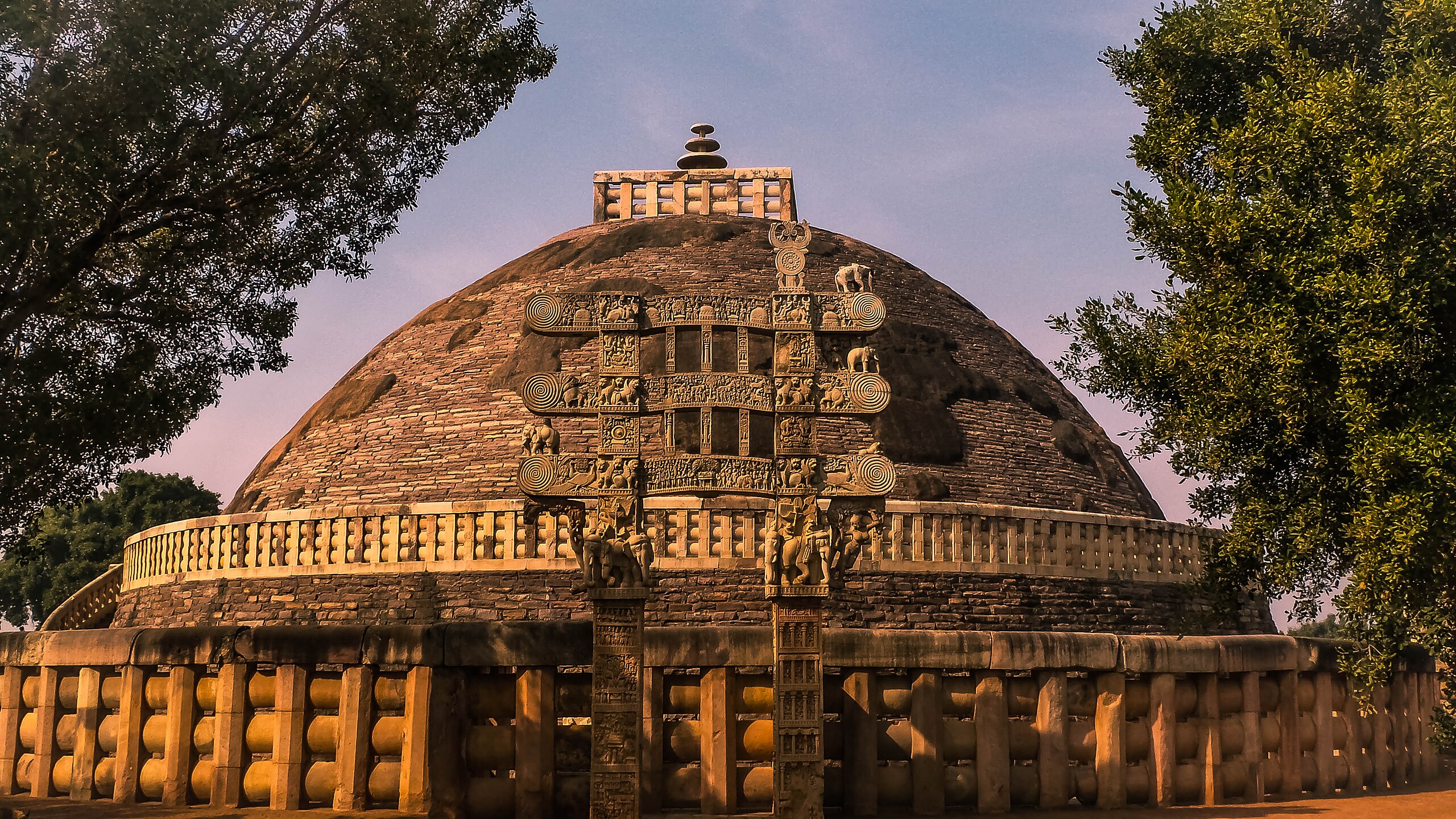
Sanchi Stupa, located in the Raisen district of Madhya Pradesh, is one of the oldest stone structures in India and a UNESCO World Heritage Site. Built during the reign of Emperor Ashoka in the 3rd century BCE, it is a significant monument of Buddhist architecture. The Great Stupa, with its large hemispherical dome, enshrines relics of Lord Buddha and serves as a symbol of his teachings.
The stupa is surrounded by intricately carved gateways (toranas) that depict various events from the life of Buddha, as well as stories from the Jataka tales. These carvings are masterpieces of ancient Indian art, reflecting the skill and devotion of the craftsmen of that era. The peaceful ambiance of the site makes it a perfect place for reflection and spiritual connection.
Visitors can also explore nearby attractions such as the Ashoka Pillar, monasteries, and smaller stupas scattered around the complex. The well-maintained gardens and museum add to the overall experience, making it both a historical and cultural journey.
Best time to visit: October to March
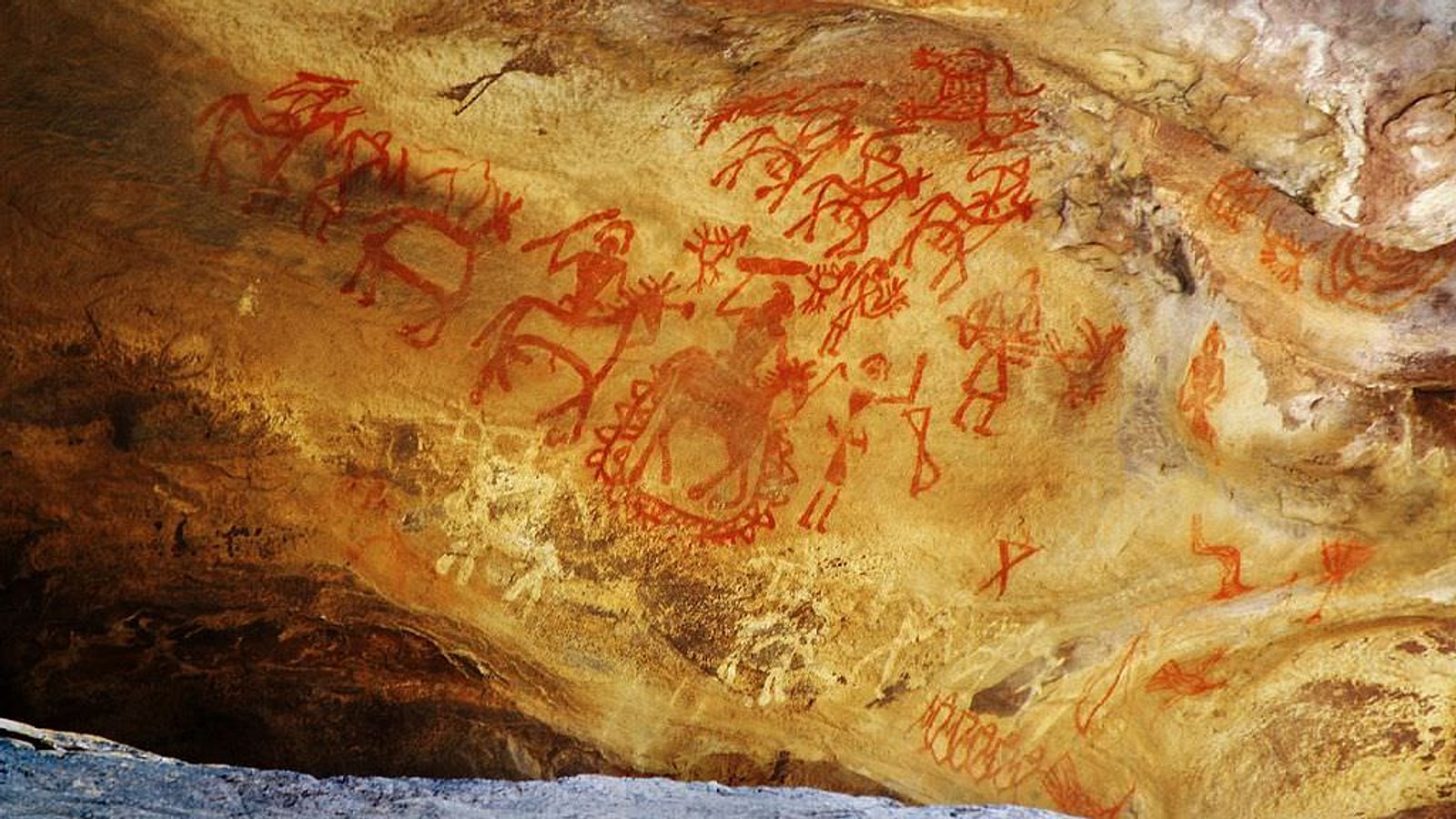
Bhimbetka Rock Shelters, located in the Raisen district of Madhya Pradesh, are a UNESCO World Heritage Site and one of the most important prehistoric archaeological sites in India. These rock shelters showcase evidence of human habitation dating back to the Paleolithic era, with cave paintings that are over 30,000 years old. The stunning artwork depicts scenes of hunting, dancing, animal figures, and everyday life, offering a fascinating glimpse into the evolution of human culture.
The site is set amidst the foothills of the Vindhya Range and is surrounded by dense forests and rocky terrain. The natural rock formations themselves are impressive, shaped by centuries of wind and weather. Many of the paintings are remarkably well-preserved, thanks to the protective overhangs of the rocks, and display vibrant colors made from natural pigments.
Walking through the shelters feels like stepping back in time, as each cave narrates a different story of early human civilization. Apart from the art, the geological formations and panoramic views make it a destination of both historical and natural beauty.
Best time to visit: October to March
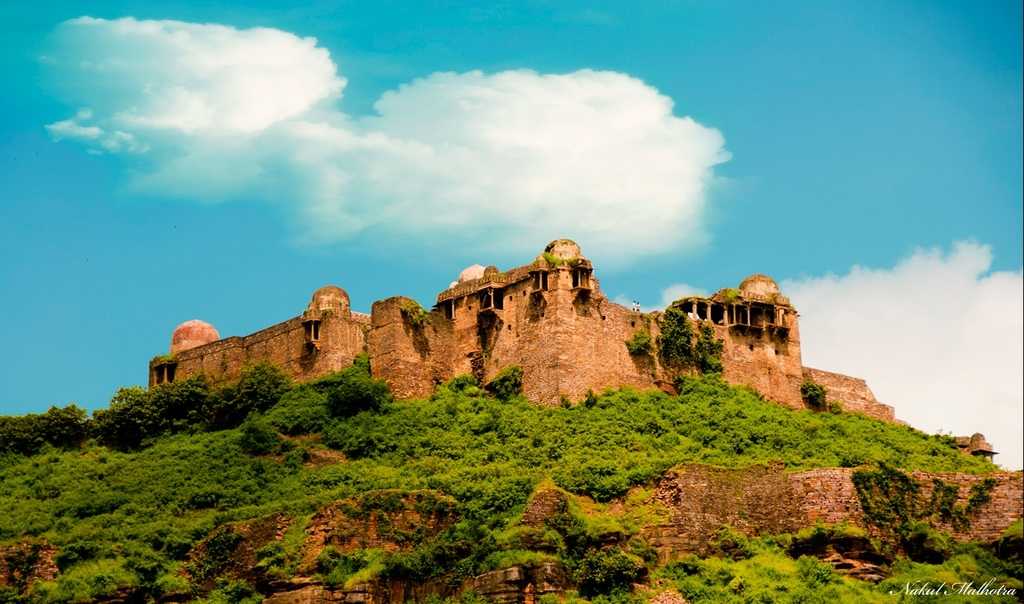
Raisen Fort, located in the Raisen district of Madhya Pradesh, is a historic hilltop fortress that dates back to the 11th century. Built on a massive sandstone hill, the fort offers commanding views of the surrounding landscape and is known for its impressive architecture and strategic location. It has witnessed the rule of various dynasties, including the Rajputs, Mughals, and Nawabs of Bhopal, making it a site rich in history and cultural heritage.
Inside the fort, visitors can explore ancient palaces, temples, domes, and water reservoirs, which once sustained the fort's inhabitants. One of the most revered structures here is the shrine of Hazrat Peer Fatehullah Shah Baba, attracting devotees throughout the year. The fort walls and gateways reflect a blend of Hindu and Islamic architectural styles, showcasing its diverse historical influences.
Inside the fort, visitors can explore ancient palaces, temples, domes, and water reservoirs, which once sustained the fort's inhabitants. One of the most revered structures here is the shrine of Hazrat Peer Fatehullah Shah Baba, attracting devotees throughout the year. The fort walls and gateways reflect a blend of Hindu and Islamic architectural styles, showcasing its diverse historical influences.
Best time to visit: October to March
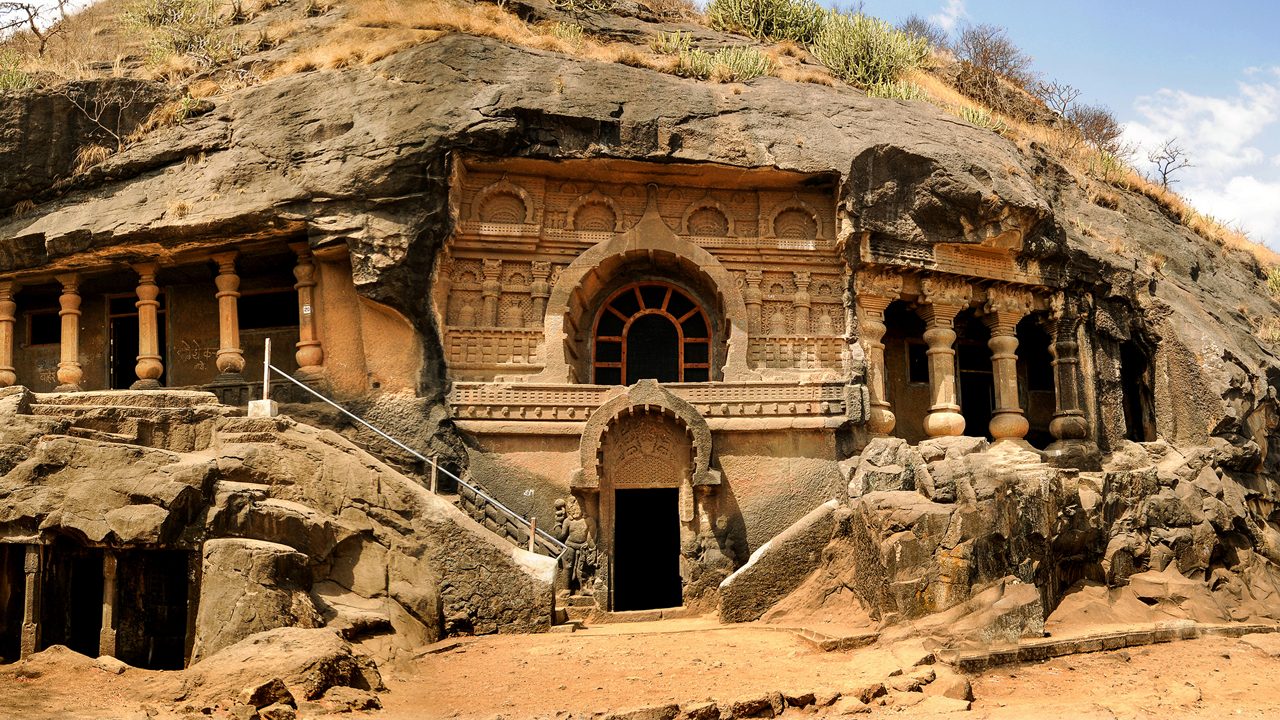
Pandav Caves, located in Pachmarhi, Madhya Pradesh, are a group of five ancient rock-cut caves steeped in mythology and history. According to local legend, these caves served as the shelter for the Pandava brothers during their exile, as described in the epic Mahabharata. Carved out of sandstone, the caves are simple yet intriguing, offering a glimpse into ancient craftsmanship and the area's cultural significance.
The caves are set atop a small hill and are surrounded by lush greenery, giving them a tranquil and mystical aura. Each cave varies in size, with the largest believed to have been used as a prayer hall. The interiors remain cool even during hot summers, and the location provides a peaceful spot for visitors to rest and take in the natural surroundings.
The caves are set atop a small hill and are surrounded by lush greenery, giving them a tranquil and mystical aura. Each cave varies in size, with the largest believed to have been used as a prayer hall. The interiors remain cool even during hot summers, and the location provides a peaceful spot for visitors to rest and take in the natural surroundings.
Best time to visit: October to March
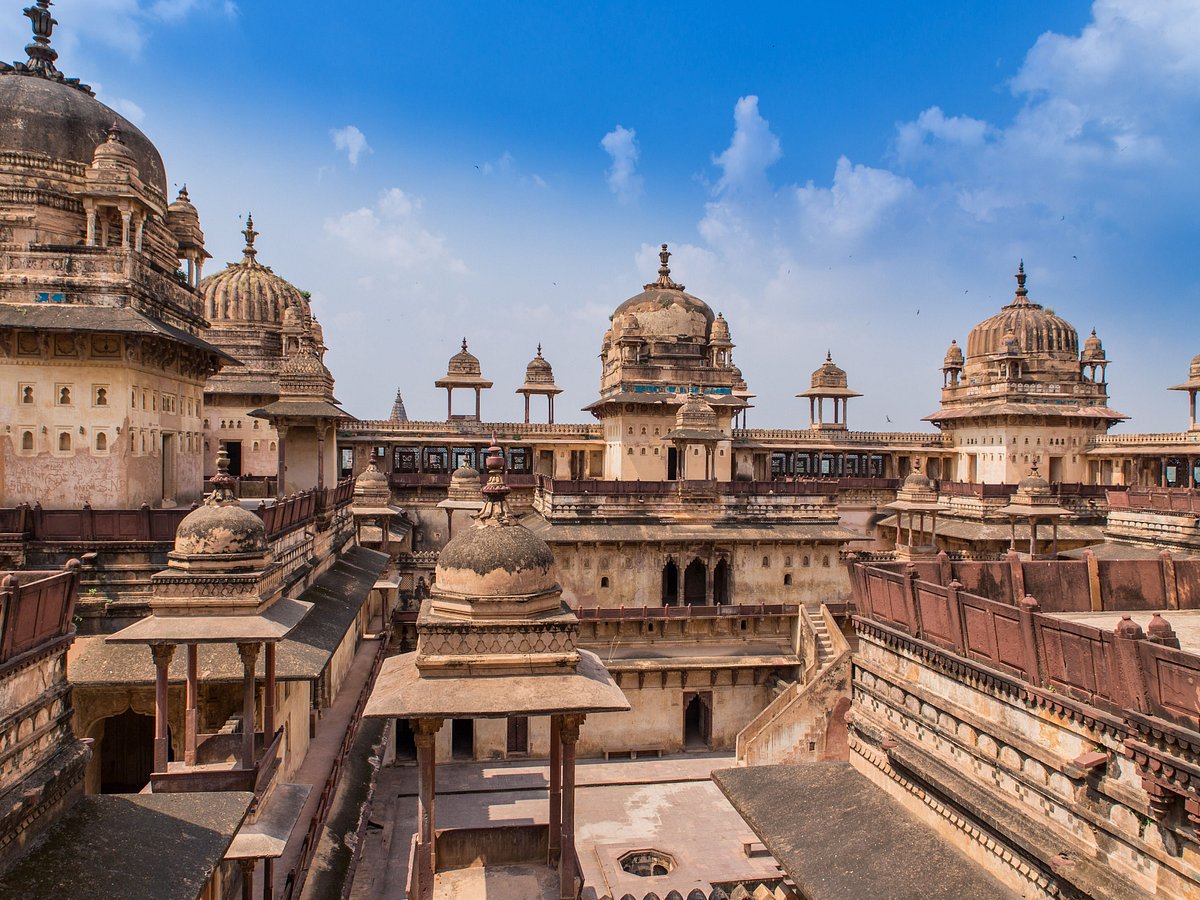
Orchha Fort, located on the banks of the Betwa River in Madhya Pradesh, is a magnificent complex that showcases the grandeur of Bundela architecture. Built in the 16th century by Raja Rudra Pratap Singh, the fort comprises several palaces, temples, and gardens, each reflecting intricate craftsmanship and royal elegance. Its prime attractions include the Jahangir Mahal, Raj Mahal, and Rai Praveen Mahal, which stand as enduring symbols of Orchha’s rich history.
The fort’s elevated location offers stunning views of the Betwa River and the surrounding countryside. The Jahangir Mahal, with its ornate balconies and domed pavilions, was built to honor the Mughal Emperor Jahangir, blending Mughal and Rajput architectural styles. Meanwhile, the Raj Mahal is famous for its mural paintings depicting religious themes and royal life.
Visiting Orchha Fort feels like stepping back in time, with its quiet courtyards, arched gateways, and intricate carvings narrating tales of bravery and romance. The fort complex is also beautifully illuminated at night, making it a mesmerizing sight for visitors.
Beyond its architectural splendor, Orchha Fort is deeply intertwined with local legends and cultural heritage, making it a cherished site for history lovers and photographers alike. The peaceful ambiance, coupled with the rhythmic flow of the Betwa River, creates a serene atmosphere that contrasts beautifully with the fort’s grandeur, offering visitors both a cultural and a soulful experience.
Best time to visit: October to March

The Marble Rocks of Bhedaghat, located near Jabalpur in Madhya Pradesh, are a stunning natural wonder where the Narmada River cuts through tall, glittering cliffs of white marble. These majestic rocks rise up to 100 feet high and change colors with the sunlight, creating a mesmerizing view. A boat ride through the gorge, especially on a moonlit night, is an unforgettable experience as the marble glistens in silvery hues.
Apart from the boat rides, the nearby Dhuandhar Falls add to the charm of Bhedaghat, where the Narmada cascades down with tremendous force, creating mist and a roaring sound. The area is also known for local marble handicrafts, making it a great place to pick up souvenirs.
The Marble Rocks are also famous for their unique geological formations, which have inspired countless legends and stories among locals. The serene boat rides often come with engaging narrations from boatmen, who share interesting tales about the rocks, including shapes that resemble animals, gods, and mythical figures. This storytelling, combined with the peaceful flow of the Narmada, creates a magical and almost mystical experience for visitors.
Photography enthusiasts find Bhedaghat a paradise, as the interplay of light and shadow on the marble cliffs offers endless opportunities for breathtaking shots. Sunrise and sunset bring out warm golden tones, while moonlit nights bathe the gorge in a dreamy silver glow, making every visit feel different and special.
Best time to visit: October and March
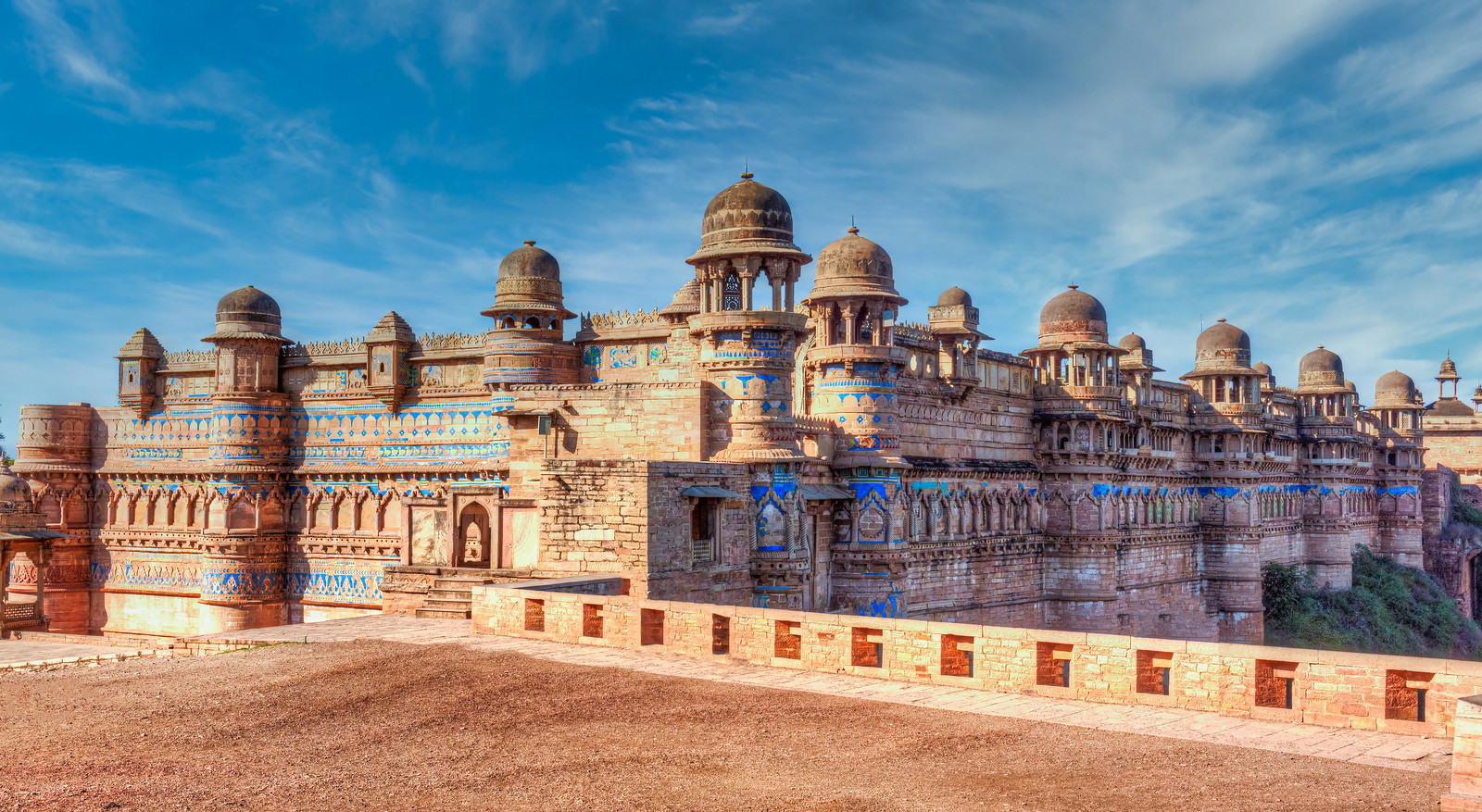
Gwalior Fort, located in Madhya Pradesh, is an architectural marvel often referred to as the “Pearl Among Fortresses in India.” Perched on a hilltop, it has witnessed centuries of history, with roots dating back to the 8th century. The fort is home to grand palaces, intricately carved temples, and imposing gates, each reflecting a blend of Rajput, Mughal, and Maratha architectural styles. Its massive sandstone walls dominate the city’s skyline, making it a prominent historical landmark.
Inside the fort complex, attractions like the Man Singh Palace, with its stunning blue-tiled façade, and the Sas-Bahu Temples, known for their intricate carvings, showcase the rich artistry of the time. The fort also houses the Gurudwara Data Bandi Chhod, an important Sikh pilgrimage site, and several ancient rock-cut Jain statues that add to its spiritual significance.
Visitors are often captivated by the panoramic views of Gwalior city from the fort’s ramparts. The fort also hosts a spectacular evening light and sound show, narrating its glorious past, which adds a magical touch to the experience.
Best time to visit: October to March
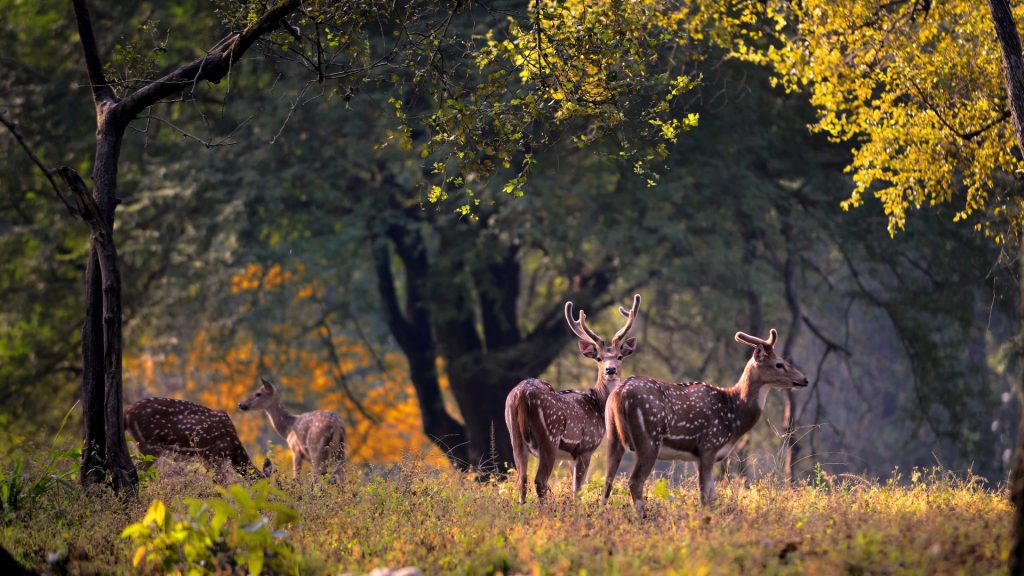
Kanha National Park, located in Madhya Pradesh, is one of India’s premier wildlife sanctuaries and a major inspiration behind Rudyard Kipling’s The Jungle Book. Spread over dense sal and bamboo forests, open meadows, and winding rivers, it is home to a rich variety of flora and fauna, including the majestic Bengal tiger, Indian wild dog, sloth bear, and barasingha (swamp deer). The park’s diverse habitats provide shelter to over 300 species of birds and numerous other wildlife, making it a paradise for nature lovers and photographers.
Visitors can embark on thrilling jeep safaris and guided nature walks to spot elusive wildlife and experience the raw beauty of the jungle. The park’s well-maintained trails and campsites offer comfortable stays amidst nature, allowing travelers to immerse themselves in the wilderness. Kanha also plays a vital role in wildlife conservation and is part of Project Tiger, contributing significantly to the revival of tiger populations.
The park’s lush landscapes transform with the seasons—from the vibrant blooms of spring to the lush greenery of the monsoon and the crisp coolness of winter—offering a varied experience throughout the year. Nearby tribal villages add a cultural touch, offering glimpses into the lives of local communities closely connected to the forest.
Best time to visit: November to June and March to June
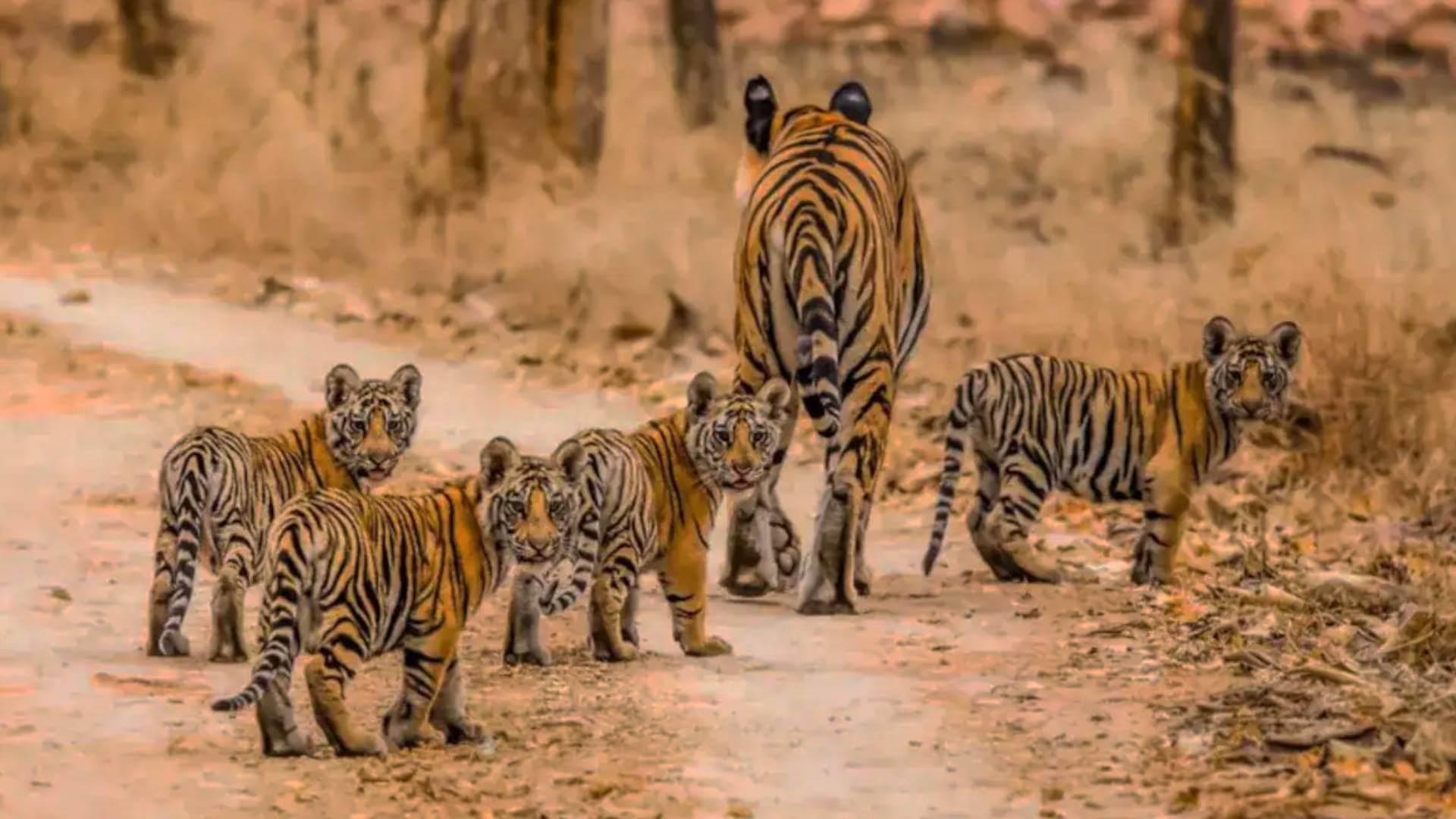
Panna National Park, located in the heart of Madhya Pradesh, is a stunning wildlife sanctuary known for its diverse landscapes of dense forests, rugged hills, and sparkling rivers. Famous for its successful tiger conservation program, Panna is home to Bengal tigers, leopards, sloth bears, and a rich variety of bird species. The park’s unique geography includes the breathtaking Ken River gorge and numerous waterfalls, making it as much a visual delight as a wildlife haven.
Visitors to Panna can enjoy jeep safaris and boat rides along the Ken River, offering chances to spot wildlife in their natural habitat while soaking in the serene surroundings. The park’s trails also lead to historical ruins and ancient temples, adding a cultural layer to the adventurous experience. The blend of wildlife, water bodies, and rugged terrain makes Panna a diverse and exciting destination for nature lovers.
Panna’s natural beauty changes with the seasons—from the lush greenery after the monsoon to the dry, golden hues of summer—each offering a different perspective of the park’s charm. The nearby Ken Ghariyal Sanctuary, dedicated to the endangered gharial crocodile, further enriches the ecological significance of the region.
Best time to visit: November to June
